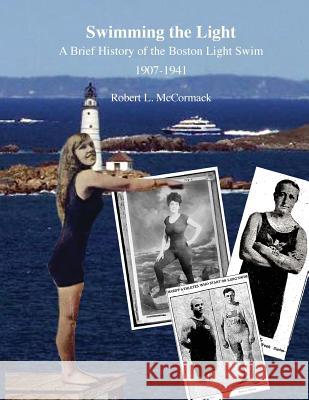Swimming the Light: A Brief History of the Boston Light Swim 1907-1941 » książka
Swimming the Light: A Brief History of the Boston Light Swim 1907-1941
ISBN-13: 9781497442740 / Angielski / Miękka / 2014 / 72 str.
Since before the turn of the twentieth century, ocean swimmers have had aspirations of "Swimming the Light." The route chosen by these early adventurers, and dreamers, went from the bridges in Charlestown to the Boston Light, on Little Brewster Island, in the outer Boston Harbor, a distance of twelve miles. In 1907, a Boston Light Swim Race was inaugurated. Of the twenty-seven swimmers who dove in at the Warren Bridge in Charlestown that year, not one succeeded in touching the shore of Little Brewster Island. The very first known, and documented, swimmer to succeed in reaching Boston Light from Charlestown was Alois Anderle, in the Boston Light Swim Race of 1909. Anderle was 40 years old and a native of Austria, then living in New York City. His time was 5 hours, 40 minutes. Once other swimmers learned from Anderle's success that this marathon swim was possible, others followed with successful swims to Boston Light. Even though victory became more common after 1909, however, most of the contestants still failed to stay the whole course. In fact, of 435 starters of the Boston Light Swim Races between 1907 and 1941, 363 failed to reach the Light, most defeated by the cold and choppy water, and the seemingly endless distance involved. This book covers the Boston Light Swim Races for the years 1907 through 1941. After the race in 1941, the event was shut down for the duration of the war. Even though World War Two ended in 1945, the swim was not restarted until 1976, when Boston marathon swimmer, Jim Doty, took it upon himself to reorganize it. The Boston Light Swim Race continues, alive and well, to the present day. The percentage of contestants finishing the grind nowadays is much higher than that of the early era. This may be attributed to several factors, not the least of which is the shortening of the course to eight miles. Other factors may include: a greater knowledge of tides, currents and other conditions; the evolution of more efficient swimming styles and strokes. The swim is considered an excellent test for the aspiring English Channel swimmer. The conditions of both swims are similar, with cold and choppy water. The two main differences are the shorter distance, and the scarcity of stinging jellyfish in the Boston swim. Nevertheless, many swimmers have based their decision to make the trip to England upon their experience in the Boston Light Swim. Neither swim is a test for the faint of heart, and the simple attempt at either one is, in itself, a significant measure of success.
Zawartość książki może nie spełniać oczekiwań – reklamacje nie obejmują treści, która mogła nie być redakcyjnie ani merytorycznie opracowana.











